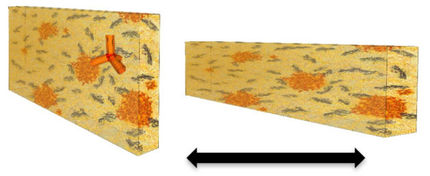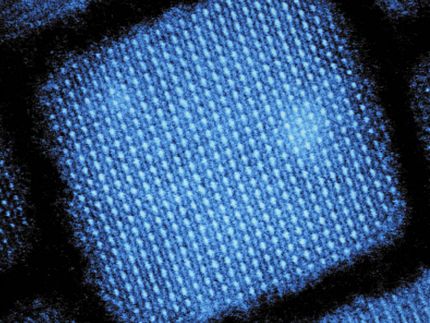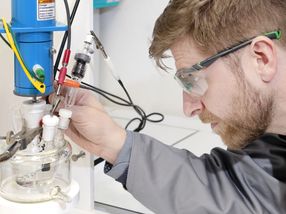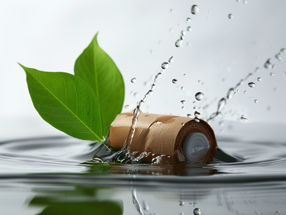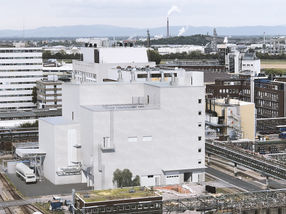First single-enzyme method to produce quantum dots revealed
quantum dots (QDs) are semiconducting nanocrystals prized for their optical and electronic properties. The brilliant, pure colors produced by QDs when stimulated with ultraviolet light are ideal for use in flat screen displays, medical imaging devices, solar panels and LEDs. One obstacle to mass production and widespread use of these wonder particles is the difficulty and expense associated with current chemical manufacturing methods that often requiring heat, high pressure and toxic solvents.
But now three Lehigh University engineers have successfully demonstrated the first precisely controlled, biological way to manufacture quantum dots using a single-enzyme, paving the way for a significantly quicker, cheaper and greener production method.
The Lehigh team-- Bryan Berger , Class of 1961 Associate Professor, Chemical and Biomolecular Engineering; Chris Kiely , Harold B. Chambers Senior Professor, Materials Science and Engineering and Steven McIntosh , Class of 1961 Associate Professor, Chemical and Biomolecular Engineering, along with Ph.D. candidate Li Lu and undergraduate Robert Dunleavy--have detailed their findings in an article.
"The beauty of a biological approach is that it cuts down on the production needs, environmental burden and production time quite a lot," says Berger.
In July of last year, the team worked on describing their use of "directed evolution" to alter a bacterial strain called Stenotrophomonas maltophilia to selectively produce cadmium sulphide QDs. Because they discovered that a single enzyme produced by the bacteria is responsible for QD generation, the cell-based production route was scrapped entirely. The cadmium sulphide QDs can be generated with the same enzyme synthesized from other easily engineered bacteria such as E. coli.
"We have evolved the enzyme beyond what nature intended," says Berger, engineering it to not only make the crystal structure of the QDs, but control their size. The result is the ability to uniformly produce quantum dots that emit any particular color they choose--the very characteristic that makes this material attractive for many applications.
Industrial processes take many hours to grow the nanocrystals, which then need to undergo additional processing and purifying steps. Biosynthesis, on the other hand, takes minutes to a few hours maximum to make the full range of quantum dot sizes (about 2 to 3 nanometers) in a continuous, environmentally friendly process at ambient conditions in water that needs no post-processing steps to harvest the final, water-soluble product.
Perfecting the methodology to structurally analyze individual nanoparticles required a highly sophisticated Scanning Transmission Electron Microscope (STEM). Lehigh's Electron Microscopy and Nanofabrication Facility was able to provide a $4.5 million state-of-the-art instrument that allowed the researchers to examine the structure and composition of each QD, which is only composed of tens to hundreds of atoms.
"Even with this new microscope, we're pushing the limits of what can be done," says Kiely.
The instrument scans an ultra-fine electron beam across a field of QDs. The atoms scatter the electrons in the beam, producing a kind of shadow image on a fluorescent screen, akin to the way an object blocking light produces a shadow on the wall. A digital camera records the highly magnified atomic resolution image of the nanocrystal for analysis.
The team is poised to scale-up its laboratory success into a manufacturing enterprise making inexpensive QDs in an eco-friendly manner. Conventional chemical manufacturing costs $1,000 to $10,000 per gram. A biomanufacturing technique could potentially slash the price by at least a factor of 10, and the team estimates yields on the order of grams per liter from each batch culture, says McIntosh.
Taking a long view, the three colleagues hope that their method will lead to a plethora of future QD applications, such as greener manufacturing of methanol, an eco-friendly fuel that could be used for cars, heating appliances and electricity generation. Water purification and metal recycling are two other possible uses for this technology.
"We want to create many different types of functional materials and make large-scale functional materials as well as individual quantum dots," says McIntosh.
He imagines developing a process by which individual quantum dots arrange themselves into macrostructures, the way nature grows a mollusk shell out of individual inorganic nanoparticles or humans grow artificial tissue in a lab.
"If we're able to make more of the material and control how it's structured while maintaining its core functionality, we could potentially get a solar cell to assemble itself with quantum dots."
